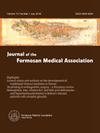使用锝-99m-焦磷酸单光子发射计算机断层扫描/计算机断层扫描监测遗传性转甲状腺素淀粉样变性心肌病患者的 RNA 干扰疗法的治疗变化。
IF 2.6
3区 医学
Q1 MEDICINE, GENERAL & INTERNAL
引用次数: 0
摘要
背景:RNA干扰疗法可减少转甲状腺素的产生,但其对遗传性转甲状腺素淀粉样变性心肌病(ATTR-CA)的影响仍不清楚。我们旨在研究接受帕替西兰或武曲西兰治疗的患者锝-99 m (99mTc)-rophosphate (PYP)单光子发射计算机断层扫描/计算机断层扫描(SPECT/CT)结果的变化:我们回顾性地确定了接受帕替西兰或武曲西兰治疗的遗传性 ATTR-CA 患者。评估第一次和第二次 99mTc-PYP SPECT/CT 数据,包括视觉分级、平面心肺比(H/CL)和容积心肺比(H/L):八名遗传性 ATTR-CA 患者入组。队列 A 包括四名患者,他们在开始接受小干扰 RNA(siRNA)治疗时接受了首次 99mTc-PYP SPECT/CT 成像检查;队列 B 包括四名患者,他们在接受首次 99mTc-PYP SPECT/CT 成像检查前一直在接受 siRNA 治疗(中位持续时间为 1281 天)。总体而言,平面 H/CL 比值有所下降(从 1.7 ± 0.2 降至 1.6 ± 0.1,p = 0.050),容积 H/L 比值显著改善(从 4.0 ± 0.9 降至 3.5 ± 0.4,p = 0.035)。虽然没有显著性,但亚组分析显示,与 B 组(-3.3 ± 11.2% 和 -4.3 ± 12.7%)相比,A 组的平面 H/CL 比值和容积 H/L 比值变化更明显(-20.1 ± 12.6% 和 -17.1 ± 11.4%):我们的研究结果表明,接受RNA干扰治疗的遗传性ATTR-CA患者的容积H/L比值明显下降。本文章由计算机程序翻译,如有差异,请以英文原文为准。
Use of technetium-99m-pyrophosphate single-photon emission computed tomography/computed tomography in monitoring therapeutic changes of RNA interference therapeutics in patients with hereditary transthyretin amyloid cardiomyopathy
Background
RNA interference therapeutics reduce transthyretin production; however, their effect on hereditary transthyretin amyloid cardiomyopathy (ATTR-CA) remains unclear. We aimed to investigate alterations in technetium-99 m (99mTc)-pyrophosphate (PYP) single-photon emission computed tomography/computed tomography (SPECT/CT) outcomes in patients receiving patisiran or vutrisiran.
Methods
We retrospectively identified individuals with hereditary ATTR-CA who received patisiran or vutrisiran. First and second 99mTc-PYP SPECT/CT data, including visual grading, planar heart to contralateral lung (H/CL) ratio, and volumetric heart to lung (H/L) ratio were assessed.
Results
Eight patients with hereditary ATTR-CA were enrolled. Cohort A included four patients who underwent their first 99mTc-PYP SPECT/CT imaging at the initiation of small interfering RNA (siRNA) treatment, while cohort B comprised four patients who had been receiving siRNA treatment before their first 99mTc-PYP SPECT/CT imaging (median duration 1281 days). Overall, there were numerical reductions in planar H/CL ratio (1.7 ± 0.2 to 1.6 ± 0.1, p = 0.050) and a significant improvement in volumetric H/L ratio (4.0 ± 0.9 to 3.5 ± 0.4, p = 0.035). Although without significance, subgroup analysis showed more pronounced changes in cohort A for both planar H/CL ratio and volumetric H/L ratio (−20.1 ± 12.6% and −17.1 ± 11.4%) compared to cohort B (−3.3 ± 11.2% and −4.3 ± 12.7%).
Conclusion
Our results demonstrated a significant decrease in volumetric H/L ratio in hereditary ATTR-CA patients receiving RNA interference therapeutics.
求助全文
通过发布文献求助,成功后即可免费获取论文全文。
去求助
来源期刊
CiteScore
6.50
自引率
6.20%
发文量
381
审稿时长
57 days
期刊介绍:
Journal of the Formosan Medical Association (JFMA), published continuously since 1902, is an open access international general medical journal of the Formosan Medical Association based in Taipei, Taiwan. It is indexed in Current Contents/ Clinical Medicine, Medline, ciSearch, CAB Abstracts, Embase, SIIC Data Bases, Research Alert, BIOSIS, Biological Abstracts, Scopus and ScienceDirect.
As a general medical journal, research related to clinical practice and research in all fields of medicine and related disciplines are considered for publication. Article types considered include perspectives, reviews, original papers, case reports, brief communications, correspondence and letters to the editor.

 求助内容:
求助内容: 应助结果提醒方式:
应助结果提醒方式:


